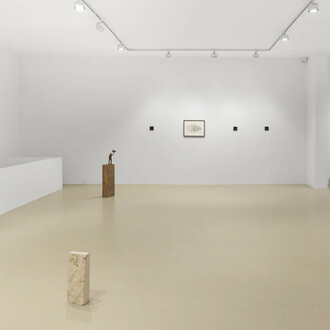KETELEER Gallery is proud to present a new group show focusing on painters of the 1980’s. With this exhibition we aim to show a slice of the energetic resurgence of figurative painting that emerged as a counter movement against the dominance of conceptual art of the ‘60s and ‘70s which by then seemed to have taken over the mindset of artists and critics alike.
Where the Neue Wilde tried to reformulate the expressionist language in what was dubbed ‘bad painting’ and chose for a bold and extroverted technique, the Antwerp Grey School found it braver to express as little as possible, leaving room for a deafening silence, a muted, impenetrable shadow of impressions in greyish subdued colours. Both classifications are however crudely generalising terms ignoring the immense diversity and differences between painters of the 80s era. There was not one style or philosophy, neither in visual qualities nor in content. Despite their seemingly irreconcilable visual attitudes, these two ‘styles’ clearly materialized out of the same conviction that painting still has a lot to say and might perhaps have a monopoly over a specific and truly humanist language.
And it appears this instinct was correct. To this day artists keep re-evaluating and re-claiming the medium throughout changing artistic, cultural and societal landscapes, making the 80’s movement even more relevant as it proves to have been more than a mere rebellion against a modernist adagio.
Something about painting touches us, maybe it’s exactly this, the visible and tactile touch of the artist which makes a painting able to be this intersubjective language of differences. A pre-individual humanity emanates from an irreducibly individual work of art and every spectator is free (or condemned) to try to tackle this ambiguous distance in their own way.
Painting predates writing and its visual capacities will probably never be surpassed by any intellectualised form of intelligence. It’s its own category, not analogues to the conversation or the rationalization of ideas. Paintings are the places where no words, concepts or ideas are formulated but where what was seen is painted over by what was experienced.
But also ‘the painterly’ regained importance, the act of painting as an experience in itself and an emergence of the self. In conversing with what paintings have been and by trying to express in a new time, the painting becomes the story of the situated artist, in time, changed by time, changing the times.
In a society where the intelligence-experience dialectic is being completely redesigned by the emergence of artificial intelligence, painting will keep on being challenged by altering philosophies and ways of being, causing for an even more vital quest for, and expression of, the Erlebnis (experience). In this process, tactility and the visible trace of a fellow human will undoubtedly acquire a whole new resonance.
















